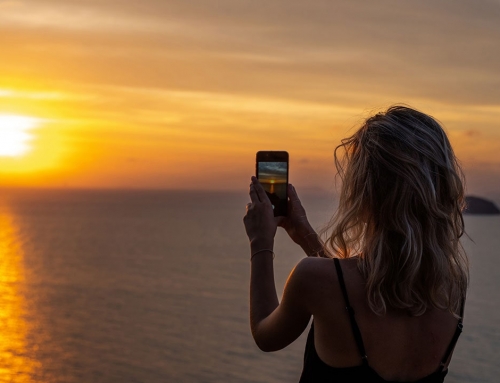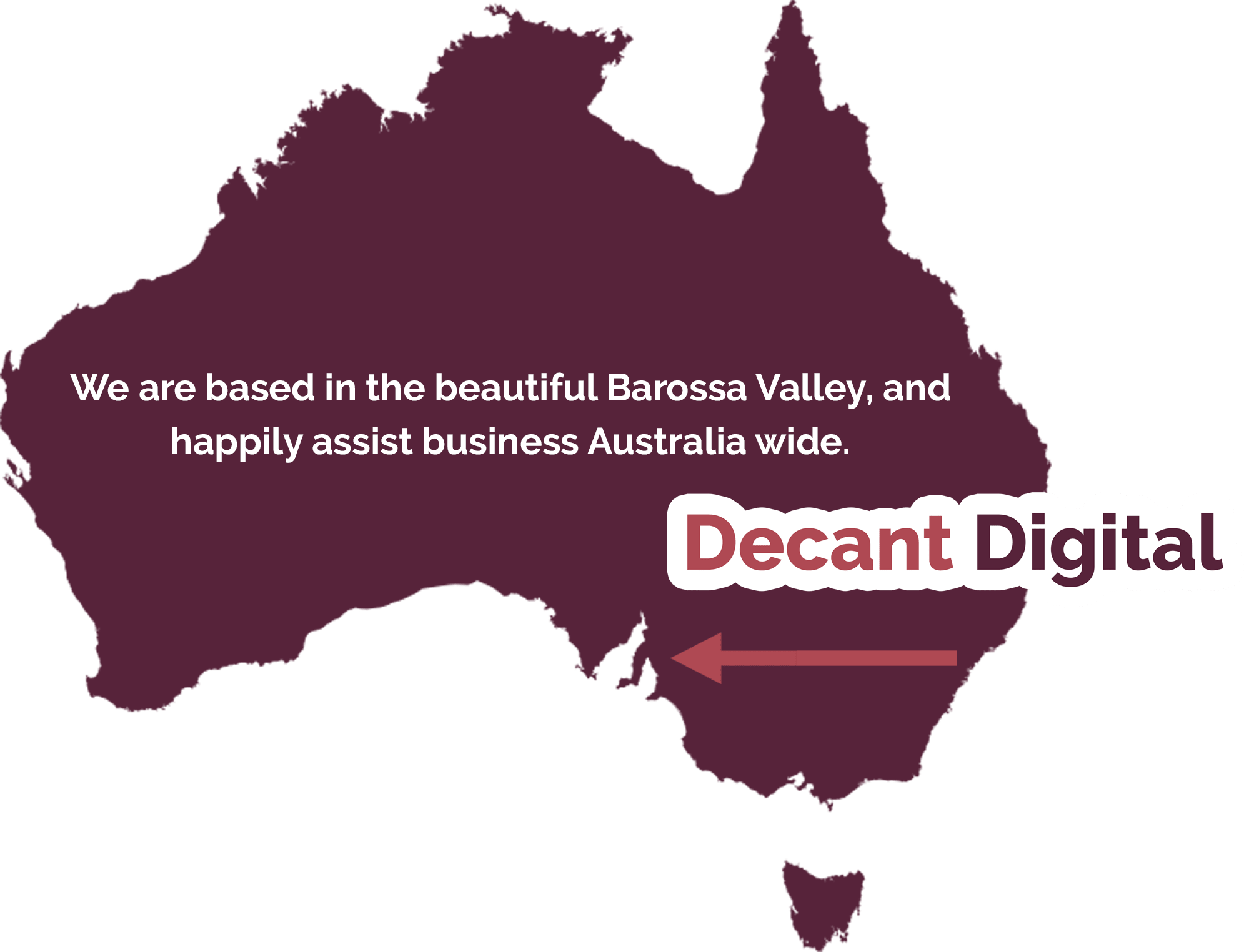Ever wonder what most successful travel and tourism businesses have in common?
Besides great service, of course!
They take their marketing seriously by investing time and money to expand their reach and drive customer awareness.
Thanks to the internet, not only have the five stages of travel forever altered, but so has how we market our tourism offerings.
Obviously, there are far greater opportunities available to get your brand in front of your ideal target audience in the digital age.
Sadly, the downside is the overwhelm created by the myriad of opportunities and angles available!
To alleviate your overwhelm and successfully help you market your tourism business, we’ve put together a 2019 toolkit of our favourite marketing devices. These are marketing tools we use to generate growth and results for our tourism, hospitality and wine clients as well as within our own business.
Metrics, Monitoring & Lead Generation
1. Google Analytics
Google Analytics is by far the most important device in your tourism marketing toolkit.
It will help you track the effectiveness of your marketing campaigns that funnel in to your website, as well as the performance of your website.
Bonus is it is free to use and offers insights into everything that happens on your website – from traffic sources, visitor behaviour and page views to bounce rates, goal achievement and conversion rates.
You’ll quickly appreciate how powerful a tool it is to measure and optimise the performance of your tourism marketing.
TIP
If you don’t have Google Analytics set up as yet – get it sorted today! As sadly, the data available is not retrospective.
2. Hotjar
Hotjar provides you with a “fast and visual way” to understand the behaviour of your website visitors, analyse your website pages and find opportunities for improvement.
Valuable metrics such as heatmaps, click maps, scroll maps, and visitor recordings are all in addition to what you gain from Google Analytics.
There is a tonne of useful features in the paid plan:
- Form Analysis – improve form completion rates
- Feedback Polls and Surveys – better understand what your tourism website visitor needs and wants.
- Conversion funnels – discover where your visitors are dropping off and identify opportunities to improve conversion.
TIP:
There is a limited free plan, but for larger tourism and hospitality businesses such as hotels, we recommend the paid plans to help you better understand traveller behaviour on your website. This analysis will in turn help you improve your marketing strategies in 2021.
3. Brand 24
Brand24 is a monitoring tool that gives you social media insights in real time.
You can track mentions about your tourism brand and competition across social media platforms, blogs, forums, news sites and more.

Brand 24 metrics dashboard
It is a paid service, but well worth it. Not only can you discover where your tourism brand is being mentioned online, but you can also react and engage quickly. To positive or negative comments or to sales opportunities.
TIP:
Brand24 can help you identify unhappy customers in real time. This is incredibly valuable as let’s face it – bad news travels fast, but bad online news travels even faster!
One unhappy customer venting their anger online can start a snowball effect and eventually result in PR crisis. Thanks to real-time customer sentiment analytics, you can quickly spot and respond to any such threat.
Content Marketing
4. Ubersuggest
UberSuggest is a free, easy to use keyword research tool that helps you find:
- Relevant Keywords
- How competitive it is to rank for those keywords
- Estimated traffic those keywords may generate
- Loads of other related keywords
Because when you create your digital content calendar to support your tourism Marketing Plan, keyword research is a must.
TIP:
Ubersuggest is perfect for when you want your tourism blog to rank for certain keywords and drive organic traffic to your website.
[/et_pb_text][et_pb_text admin_label=”5. CoSchedule Headline Analyzer” _builder_version=”3.19.9″]
5. CoSchedule Headline Analyzer
CoSchedule Headline Analyzer helps you get the right combination to drive traffic, shares and search results in the online world.
Because whether you are designing a headline for a blog or a print brochure – the headline itself is a combination of art and science.
Art because writing good copy is an artform. It should speak to the reader using a combination of emotion and sentiment. Science as it needs to also focus on the strength and frequency of your keywords, the length of your title, and other factors relating to the composition of the title.
TIP
Don’t go down the rabbit hole trying to get the perfect score. Aim for a score that is above average.
6. Canva
If you are not a graphic designer, Canva is your saviour when it comes to image content creation for blogs, social media, eBooks and presentations.
Size specific templates make it fast and easy to create images for most social media channels. Plus, the numerous design layouts and templates assist when your creative muse has left the room.
The platform is free to use, unless purchasing imagery. However, if you really want to rock your content creation, purchase the yearly subscription.
This will help you stay on brand with fonts, colours, logos plus resize from one social media template to the next. It also allows you to share content among your team and post to different social media channels
TIP:
Don’t go crazy testing all the fabulous font and colour options! Poor imagery and off brand communication can wreck a tourism business faster than a bad review. Create strong branding guidelines and stick to them!
7. Unsplash
Unsplash grants the user irrevocable, nonexclusive, worldwide copyright license to download, copy, modify, distribute, perform, and use photos.
And its free, including for commercial purposes, without permission from or attributing the photographer or Unsplash.
Which is perfect as quality imagery is crucial to your tourism marketing as it reates positive tourism perceptions and expectations which is critical in attracting travellers.
However, with the advent of the internet and especially social media, it is now so easy to use other’s imagery in promoting your tourism offering. The sad fact is much of this is unlawful use – take a read of our blog – Employing User Generated Content in Tourism/Hospitality Marketing to discover more on this topic.
TIP:
There are still rules that apply, such as not passing off an image as your own on listing sites such as ATDW. But Unsplash is extremely useful for quality generic imagery to use in your content marketing. Just use it wisely and sparingly though.
8. Animoto
Animoto makes it easy to create great videos that get your tourism brand noticed.
Gone are the days of video being either hard or expensive to generate. Animoto guides you through 3 easy steps and offers a world of templates, images, music, options and adjustments to make your video pop.
The Professional plan has a free 14 day trial and then starts at $22/month depending on which plan you opt for.
This is fabulous news for tourism businesses as if a great photo is worth a thousand words, then you’d have to agree that a good video is worth a million!
TIP:
Using video, you can display your offering, personality and story so much faster than by relying on static words and images alone.
As has been put so well by Neil Patel “Considering that video now appears in 70% of the top 100 search results listings, and that viewers are anywhere from 64-85% more likely to buy after watching a product video – this is one marketing force you can’t afford to ignore.”
Collaboration
9. Dropbox
Dropbox hosts all of your files are online, securely, in one place.
It is cloud based and synchronises across all devices so you can access and share your documents, spreadsheets, images, slideshows, videos and more wherever you are. Even the big files.
Invaluable as an organisational and collaboration tool and there is a free plan depending on how much storage you use for your tourism business.
TIP:
Dropbox is brilliant for collaboration. A great example is if you set up a folder titled Media. Add 5 to 10 high res, quality images of your tourism business and other marketing collateral such as brochures, business background and owner bios. Whenever you have a media, blogger or influencer request information, you can share this link with them instead of re-inventing the wheel each time.
Lead Generation / Customer Relations
10. Drift
Drift is a messaging app that makes it easy for you to talk to your website visitors, convert more leads, and keep your customers happy.
Here’s the problem: 98% of people will visit your website and then leave without doing a single thing. But with Drift on your website, you can change that simply by saying hello and starting a conversation — just like you would in-person.
And once you turn that website visitor into a customer, you can use Drift to send targeted in-app messages, surveys to get customer feedback, and more.
And with Drift on your mobile phone, you can manage all of those conversations and reply to people on the go, too.
TIP:
Chat functionality can help to capture customers by answering their questions quickly; it can also drive more leads by reaching out to prospective customers before they leave your website.
Are you feeling less overwhelmed now about the most useful tools to optimise your tourism marketing in 2021?
We hope so!
While there is a vast amount of online marketing tools available, these are definitely our favourites for 2019.
To recap, what is exciting and powerful about this list is that they can help your tourism business to:
- Engage your ideal customers
- Drive traffic to your conversion funnels
- Increase sales
- Measure your campaigns
- Improve your online offering and results!
If you need help integrating any of these tools into your tourism marketing, we’d love to assist.
And of course, if you have found other great tourism marketing tools, we’d love you to let us know in the comments section below so we can boost this toolkit.












Thx for the recommendation, Tania! Best from Brand24 😉